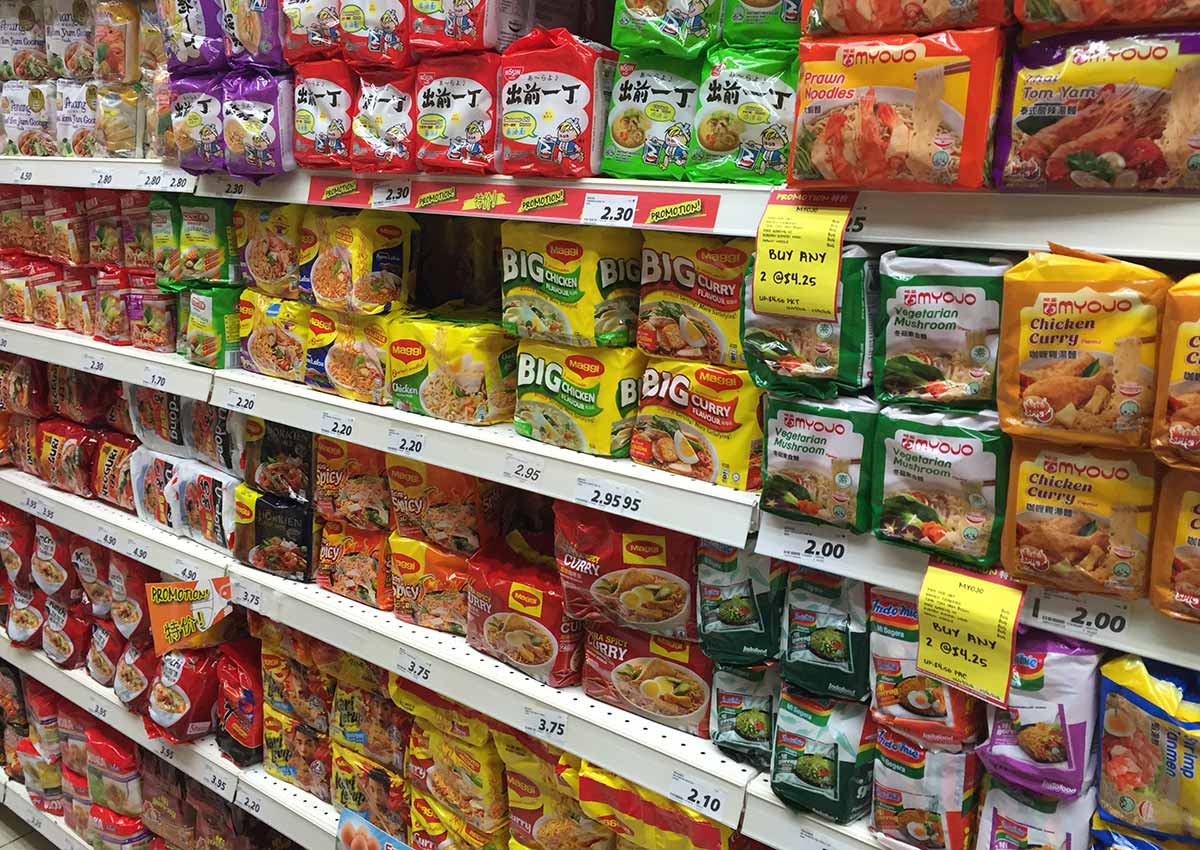SINGAPORE – Reaching for that packet of instant noodles after a hard day?
You are not alone.
Sales of instant noodles have been rising year on year, say several supermarkets The New Paper spoke to.
A report by global marketing research firm Nielsen showed that there was a 7.9 per cent growth in the instant noodle market size in Singapore from 2015 to 2016.
Sheng Siong supermarket told TNP there has been a 10 per cent growth in the sales of its instant noodles over the past two years.
Other retailers, such as NTUC FairPrice, told TNP there has been a 5 to 9 per cent spike in sales over the past year.
Cold Storage revealed that it saw double-digit growth over the past four to five years.
Why is demand rising?
Convenience, and hot new flavours.
Noting Singaporeans’ busier, more hectic lifestyles, Mr Jack Loo, chief methodologist of independent marketing research firm Nexus Link, said: “Out of convenience, many would choose to dine out or consume instant food for their ‘quick’ meals. Their affordability will provide the impetus for their continuous demand over the long term.”
CHOICES
He also noted that customers are now “spoilt for choice”, with a wide variety of new flavours on the shelves.
Euromonitor International analyst Reema Jagtiani said industry players have “sought to raise the bar in terms of flavour offerings to retain interest”.
Mr Adrian Tan, managing director of consulting group Asia Insight, added: “When you compare a typical supermarket shelf selling instant noodles five years ago and today, you will see that there are so many more choices.”
He noted that manufacturers have created new flavours both local – laksa, bak kut teh – and foreign – Japanese beef soba, Korean kimchi, Vietnamese pho – to cater to customers who are used to the wide variety of cuisines available here.
“The desire to replicate an eatery experience at home opens up opportunities for premium and global flavours,” he said.
The innovation in flavours satisfies spice palates and also extends to other international cuisines, said Mr Raphael Pereda, head of FMCG Industry at Nielsen Singapore.
Data from the supermarkets bear this out.
Giant said it has seen an increase in sales in two particular products – the hot chicken flavour from Korean brand Samyang and Maggi’s extra spicy goreng flavour.
“New Korean brands which offer spicy options are gaining a foothold in Singapore, as (these flavours fit) the palate of locals who love spicy food,” said a Giant spokesman.
According to Sing Long Foodstuff, Samyang’s local distributor, orders for its hot chicken flavour went up by 25 to 30 per cent this year.
Supermarkets say other popular flavours include local brand Prima Taste’s premium range of la mian and wholegrain ramen.
Ngee Ann Polytechnic student Por Shi Hui, 19, eats instant noodles at least twice a week because it is “fuss-free”.
Convenience is also why Ms Lydia Leong, 28, an order management analyst, reaches for instant noodles when she is pressed for time.
And she does not mind splurging on her favourites – laksa or kimchi flavours from premium brands, which can cost about $2 more per packet compared to regular brands.
“They have better quality. The noodles are more springy and do not get soggy easily,” she said.
huienl@sph.com.sg
WATCH FAT, SODIUM CONTENT
Before you tuck into your next bowl of instant noodles, you may want to read this.
The New Paper checked the sodium content of five instant noodle brands and found that on average, one packet contains 1,317mg of sodium.
According to the American Diabetes Association, the recommended sodium intake per day for an adult above 18 years old is between 1,500mg and 2,300mg.
Ms Ng Hooi Lin, a nutritionist from the Singapore Nutrition and Dietetics Association (SNDA), said a survey by the Health Promotion Board showed that the average Singaporean consumes 3,527mg of sodium a day – that is almost 70 per cent more than what he or she should consume on a daily basis.
“A diet high in sodium increases the risk of developing high blood pressure, which in turn can lead to heart disease, stroke and kidney failure,” she said.
The high amount of fat in instant noodles also adds to the health risk.
A regular packet of noodles can contain up to 10,300mg of fat, of which half is saturated fat.
Ms Jaclyn Reutens, a dietician from Aptima Nutrition and Sports Consultants, said that palm oil – one of the ingredients in instant noodles – is high in saturated fat.
“If saturated fat is eaten in high amounts, it can increase the risk of high cholesterol, which is the gateway to an array of cardiovascular diseases,” she said.
WHOLEGRAIN
Ms Reutens said there are healthier instant noodles available in the market. These contain a lot less fat and sodium compared to regular versions.
There are also some brands that use wholegrain noodles that contain more fibre.
“Look for labels that say ‘non-fried’, ‘low fat’, ‘no MSG added’ or ‘reduced salt’,” said Ms Reutens.
Look for the healthier choice symbol as well.
During cooking, you can also add only half of the flavouring packet, which will reduce the sodium content.
aamfir@sph.com.sg

This article was first published on October 3, 2016.
Get The New Paper for more stories.






